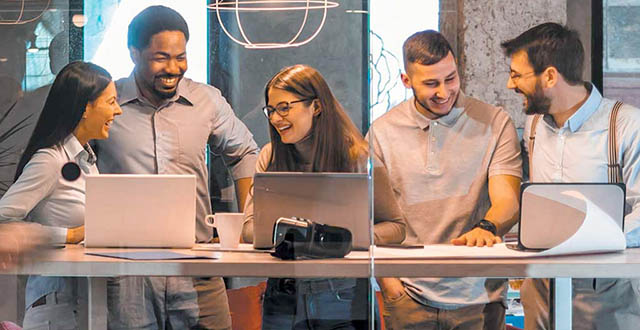The way we pay – today and tomorrow – payment
Payment transactions have been a part of our world for a long time. From goods to commodities and from commodities to cash, payment has taken many forms over the centuries. Payment progress has been more a history of evolution than revolution, with incremental novelties arising from time to time. Today, we see the development of payments being driven around four axes.
1/ Rendering the payment experience seamless or even invisible
Some months ago Amazon introduced its Amazon Go (physical) store. Once you have picked up your goods, you don’t need to stand in line and wait to check out and pay. You just leave the store; the payment is handled without any active involvement from you or a cashier. This is arguably the most spectacular example of the trend to render the payment experience as seamless as possible. It might seem a fiction, a luxury available to only the happy few. But remember how not so long ago we were amazed how easy it was to order and pay for our coffee with just a couple of taps in our Starbucks app? Today that is a daily payment experience for millions of consumers around the globe. In India, digitalization of payment just experienced an unprecedented jump of 1352 % (NITI Aayog) since the introduction of the biometrics-based payment system Aadhaar Pay. This service enables merchants to receive payments without any physical payment means, as customers simply authorize transactions with their fingerprint.
Consumer trust is the basis of any form of payment, and regulation (e.g. the European Payments Directive PSD2) is becoming increasingly strict. Needless to say, the seamless payment experience must satisfy very high levels of security to gain the consumer’s trust and comply with regulations. One trend that combines very high levels of security with convenience is authentication via biometrics. Another is a risk-based approach to authentication, adjusting the level of authentication to the risk of the transaction.
2/ Moving the payment experience beyond paying
Payment is turning into something more than just paying, extending into pre- and post-payment value-added services. Turning big payment data into smart data pre-payment is enabling retailers to fine-tune their marketing to a virtually individual level, which can to a larger extent be offered in real time. Via beacons, the US retailer Macy’s can provide offers to its customers based on their current location in a store. A very successful example of post-payment value-added services is BBVA’s HCE solution, in which the consumer is instantly provided with an offer of credit (through his or her smartphone) when a purchase is made with the BBVA app.
3/ An increasing number of payment instruments
Until a few years ago, there were essentially three ways to pay: we could hand cash to somebody, we could swipe a card through a merchant’s terminal, or we could fill in a (paper) form telling our bank to transfer money from our account to another account. Today, our Uber ride is paid without our having to do anything once our driver confirms that the ride is over. We (order and) pay for our Domino’s pizza by tapping in our app. In the US, with many countries to follow, we can pay our friend the $20 we owe him by tapping “$20” in our Facebook Messenger chat; we can even tell a Chatbot to “pay Joe $20”. We no longer need to take our wallets with us everywhere we go, but can pay using our wristband, key fob, smartphone or watch. We browse through the Internet to find the best deal for our new washing machine and pay by clicking on MasterCard identity check and taking a selfie. Soon, we will tell our refrigerator to (order and) pay for five liters of milk. And so on and so forth. The number of ways in which a standard consumer pays has exploded over the past few years.
4/ An increasing number of payment interfaces
Closely linked to the payment instruments are the payment interfaces. Do you remember the nice little gray-haired ladies jingling their collection box outside your local supermarket, asking for some change for some charity or another? Well, soon you might see them holding a little plastic box in their hand, onto which you tap your contactless card to donate, say, $5. Have you ever sighed about standing in line for 30 minutes to order a beer? In some pubs now you can already pay for your beer by tapping your contactless card on a beer pump, which will unlock the pump for a pint of beer that you pour into your glass yourself. If you live in the UK and drive a Jaguar, you can pay for your fuel at Shell stations via the touchscreen of your car. Customers of Tata Sky and Mahanagar Gas in India can recharge their accounts and pay their bills by scanning a QR code that is displayed on a TV screen or printed on a paper invoice.
Where does this all leave us? Well, a fair guess is that the payment experience will continue its never-ending evolution. But surely around other axes, maybe machine-to-machine payments and open/shared ledgers, e.g. blockchains.



